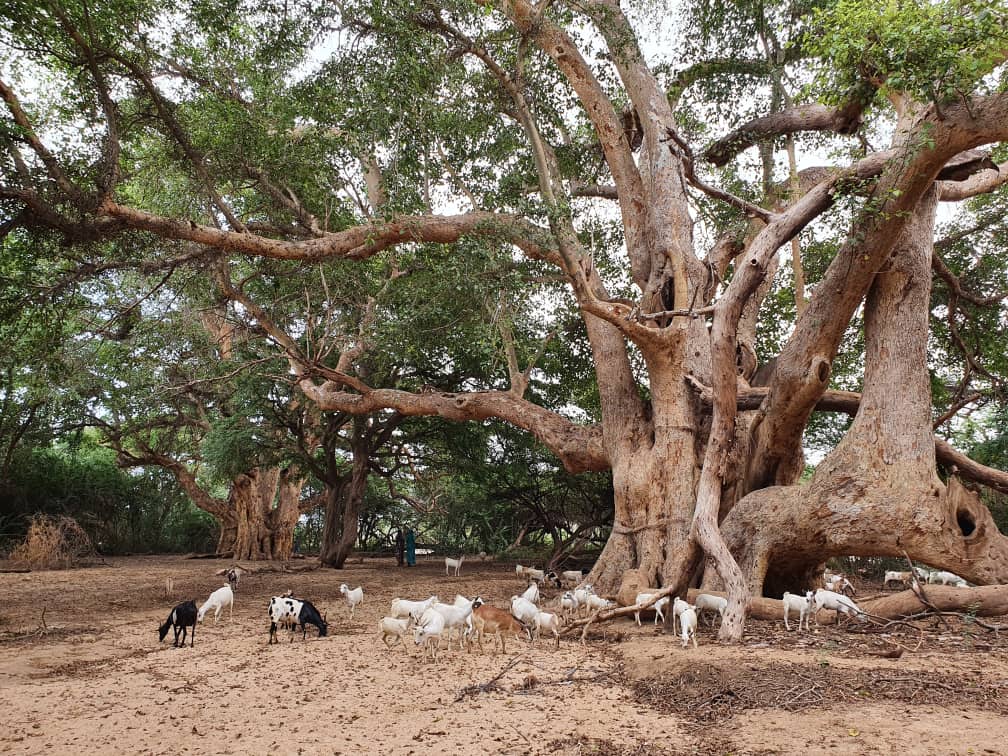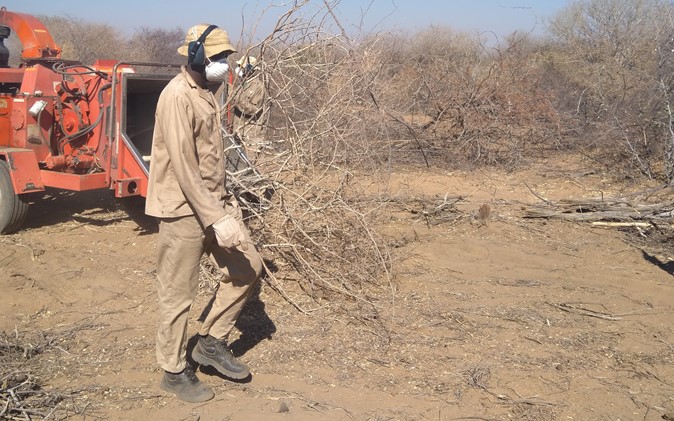Habitat restoration in Namibia, part one
-

- by Hannah Mulvany 20 October 2022

The work of CCF is holistic – we want to ensure that we solve every threat to the cheetah to ensure that they have a sustainable future in the wild. This means that our programmes vary from the weird and wonderful, such as our scat detection dogs and biofuel production, to the more practical, including our habitat restoration work. Some need a lot of explanation to see how they fit in with our cheetah conservation work, but others require none at all! Restoring cheetah habitat has very obvious benefits, however the work of our team is extremely varied and incredibly interesting. When you consider that cheetahs have disappeared from around 90% of their historical range, it shows how important our work to improve and restore habitat is.
We wanted to highlight this part of our work, so we spoke to CCF’s Senior Ecologist and Forest Steward Matti Nghikembua who was happy to answer all of our questions. We hope you enjoy this two-part blog!

CCF UK: Why is habitat loss affecting cheetahs, their prey and the ecosystem?
Matti: Bush encroachment affects approximately 45 million hectares of Namibian farmland, causing significant reduction in areas that are suitable for livestock farming and habitat for animals who are adapted to life in open woodland habitats (such as cheetahs). When these thick thorny plants grow over areas that were previously covered in grass, it means that cheetahs are no longer able to hunt there as they cannot see their prey.

Namibian farmlands support a free ranging wildlife population and can also be used for livestock farming, which are both key resources for the local economy. As more cheetah habitat is lost due to bush encroaching onto grasslands, more cheetahs are living and hunting on farmland, causing human-wildlife conflict. Hunting around the thorny bushes is dangerous for cheetahs as the thorns can seriously injure cheetahs, so livestock that is grazing in open areas becomes an easier and much less risky target than the springbok, oryx, eland, and red hartebeest that they would usually predate.
With less grazing land available due to encroachment, livelihoods of farmers are also under threat as there is less food and space available for their livestock and therefore they are less likely to tolerate livestock predation by cheetahs when times are already hard, and are more likely to retaliate. Bush encroachment pushes farmers, their livestock and cheetahs into an ever-reducing area of land, so conflict is inevitable.

During 2001 the ‘bush project’ was established. This project was funded by the United States Agency for International Development (USAID) as an initiative to develop a habitat improvement project for the cheetah, a species adapted to open African savanna habitat. The overall goal for this project is to provide habitat improvement of bush encroached farmlands to increase farmland productivity and improve habitat conditions for the cheetah and other native wildlife species. This project contributes towards job creation and provides linkages between agriculture and conservation resources – and ultimately enhances socio-economic conditions for the farmers.

CCF UK: How do you remove areas of encroaching bush while ensuring you don’t cause damage to the ecosystem?
Trees and shrubs are important components of the savannah ecosystem. Complete clearing of the vegetation from the landscape has the potential to negatively impact the resilience of ecosystems against natural disturbances (such as storms), reduces their productivity and suitability for local wildlife. CCF conducts soil surveys to study the nutrient and mineral compositions in previously harvested and bush encroached habitat to gain insight into the impacts of bush encroachment and restoration thinning to ensure that there has not been a negative impact.
CCF UK: How is CCF reducing bush encroachment to improve and restore habitat?
Matti: To counteract the negative effects of bush encroachment, we use a process called ‘selective thinning’, which reduces the density of the the overabundant trees/shrubs. Trees/shrubs are manually thinned using handheld tools (axes and machetes). Manual harvesting rather than mechanical harvesting is the preferred method since it allows us to directly target certain species, avoids us causing any harm to slow-moving animals and minimises soil disturbance. Bush thinning provides unskilled job opportunities to local people and rural business opportunities. Five encroaching species are targeted: the sickle bush, black-thorn acacia, blade thorn, red umbrella thorn and umbrella thorn.
During harvesting, we try to mostly target small to medium sized tree/shrubs (~40-60%). Large trees/shrubs with stem diameters of 18 cm and higher are avoided and some tree/shrub clumps of the encroaching species are retained as sub habitats to provide browse, shelter, or habitat for animals

If you’d like to support our habitat restoration work, please consider making a donation to CCF UK.
Do you have any questions for Matti about this part of CCF’s work? Please send us a message on Facebook, Twitter or Instagram and we’ll get them answered for you!
Related Reading
-
30 October 2024
Meet the Bandit Group: a crew of cheetahs aged 9 to 11 months



